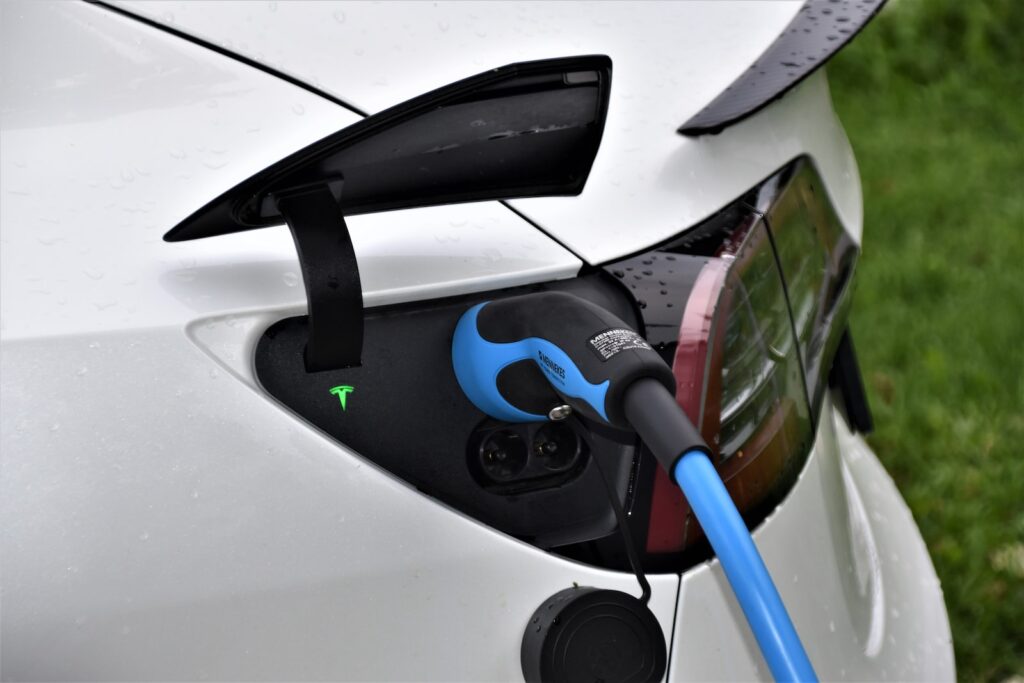Feature: How can electric vehicles be made more accessible to disabled people?
 Tim Anderson, Energy Saving Trust’s Head of Transport, explains how the current EV environment does not cater to disabled people and what can be done to improve accessibility.
Tim Anderson, Energy Saving Trust’s Head of Transport, explains how the current EV environment does not cater to disabled people and what can be done to improve accessibility.
The popularity of electric vehicles (EVs) is increasing. Recently-published figures from the Society of Motor Manufacturers and Traders show more than one in five vehicle registrations in the first half of 2022 were for EVs, taking the total number of plug-in vehicles on the UK’s roads to 930,000. The phase-out of sales for new petrol and diesel cars and vans in 2030 means this number is only set to grow and the majority of UK consumers will be switching to EVs within a decade.
But a significant proportion of the population is set to be left behind in this transition. There are more than 14 million disabled people in the UK and as shown by Energy Saving Trust’s report, Electric vehicle adoption for disabled drivers and users, the burgeoning EV landscape is failing to take their needs into account. This poses serious problems for disabled people’s future quality of life and significantly complicates government ambition for an all-electric UK-wide transportation system.
Disabled people face two key challenges in EV adoption: obtaining an EV and using an EV. Purchasing any vehicle is a complicated enough process as it is, but the disabled community face a significant lack of useful information to help them determine whether an EV can meet their individual needs.
Consumers that require wheelchair access in a vehicle, for example, have very few affordable options, due largely to the complex regulatory and technical challenges automotive industry stakeholders face when developing electric wheelchair accessible vehicles (WAVs). On Motability – the charity that helps disabled people lease a new car using their disability benefit – there are 648 model variants of petrol or diesel WAVs. There are 7 electric WAVs.
Modifications to existing EVs are possible, but they are costly, as retrofitting equipment into EVs is technically challenging due to the placement of the vehicle’s battery and lack of technical skills in high voltage volumes. This prices them out of reach for many disabled individuals, for whom life already costs £538 more on average a month than non-disabled people – a figure set to climb in line with the ongoing cost-of-living-crisis.
Disabled people that are able to obtain a suitable EV then face a raft of challenges in actually using it. Of the 2.35 million disabled vehicle drivers accessing the blue badge parking scheme, it’s expected that 1.35 million will be partially or wholly reliant on public chargepoint infrastructure, which simply put, is not yet fit for purpose. There are not enough chargepoints in the UK for all consumers to sufficiently transition to EVs and of the chargepoints that do exist, poor design and the built environment make them nearly impossible to use for many disabled people, including those with mobility, dexterity, sight, and learning disabilities.
In fact, the prevalence of obstacles such as inadequate lighting, a lack of dropped curbs, heavy and stiff cables, badly-placed connectors and unclear instructions means that just 0.003% of the UK’s public chargepoints are designed to be accessible to disabled drivers.
It is clear, then, that as things stand, adopting an EV as a disabled driver or user is likely to necessitate an almost insurmountable number of behavioural and lifestyle changes, resulting in a higher risk of loss of independence and serious impacts on quality of life. This entirely undermines the many potential benefits EVs can bring to disabled individuals, such as lower running costs, easier operation (with automatic transmission and no need for gear changes) and no requirement to use petrol pumps, which many find inconvenient and hard to access.
For local authorities, a lack of EV expertise and resources, and the high cost of electrical connections, are key barriers. Additionally, many authorities do not have highway’s permission to install chargepoints on-street, so they must rely on carpark locations or wait for the county authority to implement chargepoints. This results in less tailored strategies, or smaller projects confined to the limited number of publicly owned car parks.
But there are viable solutions to this challenge and we must take the opportunity to build an inclusive EV infrastructure now, while it is still being shaped to meet the demands of tomorrow. Although there will not be a single solution that works for all authorities, it is crucial to collect and to share success stories from across the UK. Durham County and Oxfordshire County Council’s are good examples of local authorities that are considering accessibility in their infrastructure. Alternative concepts should also be considered. Charge Fairy, for example, uses a specialist vehicle that will go to an address and charge a vehicle overnight for a fee. Services like this could be adopted by councils for their particularly vulnerable constituents.
The introduction of chargepoint design standards will also be key. Accessible charging standards for both chargepoints and their built environment are being developed by the BSI, co-sponsored by Motability and the UK Government’s Office for Zero Emission Vehicles. These are due to be published in the coming months and are a promising move. It is vital that, once published, the standards are implemented and there is a clear method for providers to demonstrate that they meet them.
In terms of improving support for disabled people in obtaining a suitable EV, amendments to the mobility allowance to reflect the higher costs of EVs could be considered until price parity is achieved, which is estimated to be four to six years away. Additionally, the recently proposed government zero-emission vehicle (ZEV) mandate on the number EVs sold by manufacturers presents a great possibility to increase the number of specific types of EVs. For example, an element of accessibility could be considered on models to ensure that multi-purpose vehicles such as people carriers are also included in the mandate. These vehicles are particularly useful for converting to WAVs, which could lead to an increase in the number of EV WAVs.
Automotive industry leaders cannot ignore what is set to be a significant future accessibility crisis. Disabled people account for 21% of the UK population – more than a fifth. Excluding this demographic from the shift to EVs is unacceptable. EVs will be mainstream transportation in under a decade, so we have the opportunity and responsibility now to ensure it is fit for purpose for everybody.
Photos by CDC and Waldemar Brandt

















